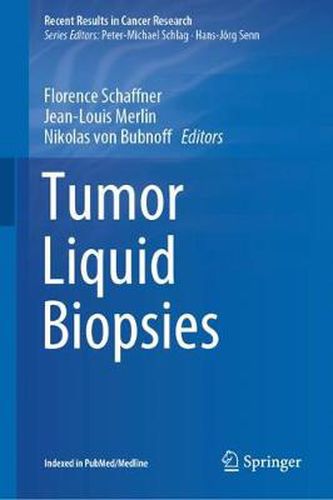Readings Newsletter
Become a Readings Member to make your shopping experience even easier.
Sign in or sign up for free!
You’re not far away from qualifying for FREE standard shipping within Australia
You’ve qualified for FREE standard shipping within Australia
The cart is loading…






This book is a comprehensive guide to the techniques, clinical applications, and benefits of the different forms of liquid biopsy employed in patients with a variety of tumor types, including lung, breast and colorectal cancer. Offering detailed explanations, it discusses the how changes in tumors can be tracked using these cutting-edge technologies, which enable the detection and analysis of diverse circulating biomarkers: tumor cells, tumor DNA, tumor RNA (free or in exosomes), and fluid biomarkers identifiable by means of targeted proteomics. The use of such advanced technologies is enabling us to tackle questions and problems in a way that was not possible just a few years ago. We now have at our disposal an effective means of overcoming the problem of intratumor heterogeneity, which has limited the value of conventional biopsy approaches. As a consequence, oncology practice is about to change radically, toward truly personalized precision medicine. This book provides both clinicians and researchers with a thorough and up-to-date overview of progress in the field.
$9.00 standard shipping within Australia
FREE standard shipping within Australia for orders over $100.00
Express & International shipping calculated at checkout
This book is a comprehensive guide to the techniques, clinical applications, and benefits of the different forms of liquid biopsy employed in patients with a variety of tumor types, including lung, breast and colorectal cancer. Offering detailed explanations, it discusses the how changes in tumors can be tracked using these cutting-edge technologies, which enable the detection and analysis of diverse circulating biomarkers: tumor cells, tumor DNA, tumor RNA (free or in exosomes), and fluid biomarkers identifiable by means of targeted proteomics. The use of such advanced technologies is enabling us to tackle questions and problems in a way that was not possible just a few years ago. We now have at our disposal an effective means of overcoming the problem of intratumor heterogeneity, which has limited the value of conventional biopsy approaches. As a consequence, oncology practice is about to change radically, toward truly personalized precision medicine. This book provides both clinicians and researchers with a thorough and up-to-date overview of progress in the field.